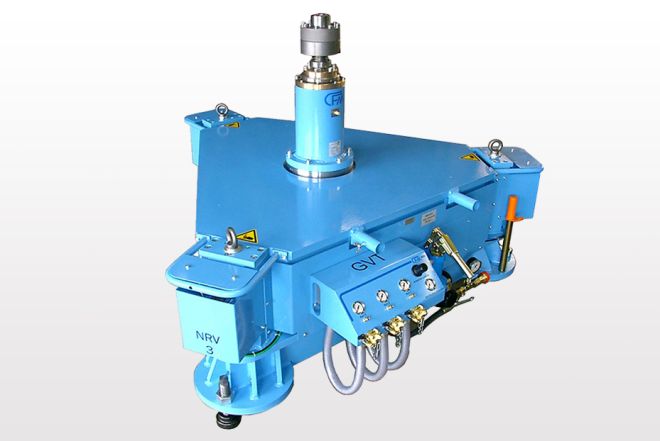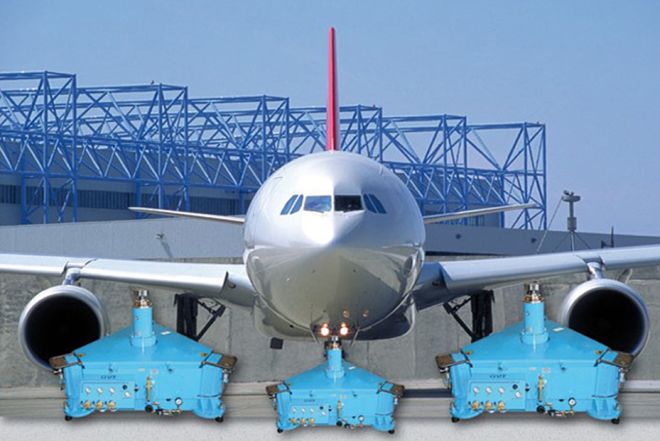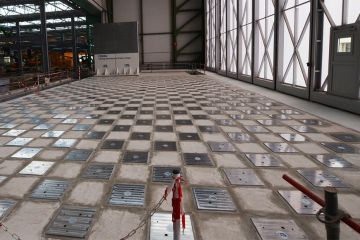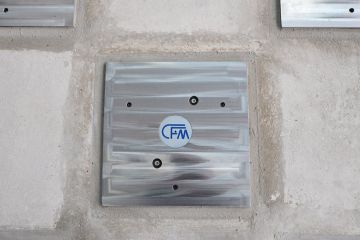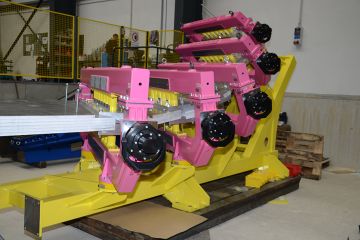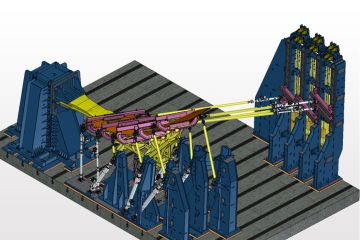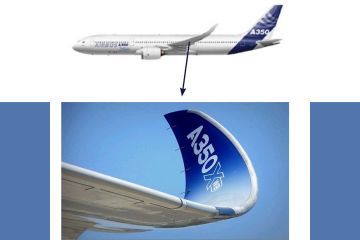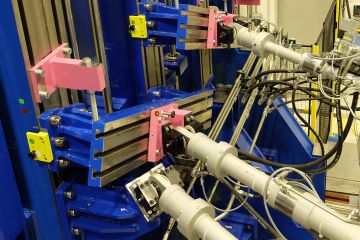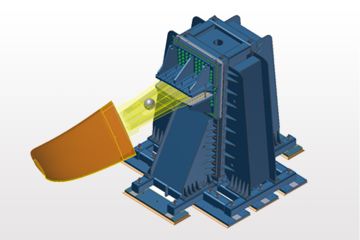AVIATION TEST RIGS
Aircraft Wing Test Rig
The permanently increasing efficiency and durability standards in aviation industry require detailed testing of the bearing structures like the wings.
New composite materials and hybrid structures require intensive testing of complete structural pats and their components to guarantee the necessary fatigue strength and lifespan.
For this purpose, CFM Schiller has designed, manufactured and assembled the mechanical structure of a future-proof, extendable wing test rig.
It is consisting of a strong floor with deep foundation, which transfers the applied loads and moments, and an extendable reaction bracket for the fixation of the wing.
The CFM Schiller strong floor contains 350 integrated anchor points of the size M36 to allow the flexible fixation of the testing actuators on an area of 18 x 10,5 m.
The extendable heavy-duty reaction bracket with a height of 5 m and a width of 4,26m (extension to 8,53 m possible) is precisely levelled and high-strength anchored to the strong floor.
It is equipped with a thread hole pattern M36 for the mounting of the wings and is fixed to the strong floor with a M68 anchor frame, which was manufactured and installed by CFM Shiller to achieve the fatigue strength rated connection between the reaction bracket and the foundation.
In addition to the flexible and comfortable usability of all attachment points, the very high precision has to be highlighted. Despite the huge dimensions and the rough civil engineering tolerances, the assembly strategy of CFM Schiller allowed to achieve precision in sub-millimetre range, which build the base for valid and revealing testing.
CFM Schiller is with its long standing and versatile experiences in the field of vibration isolation and the integrated development and manufacturing of testing equipment, especially for large-scale plants e.g. for aviation industry
CFM Schiller delivers turn key solutions, from the idea to the concept and design including internal manufacturing and assembly on site. Comprehensive experience and engineering competence are stand for the high quality and low maintenance products.
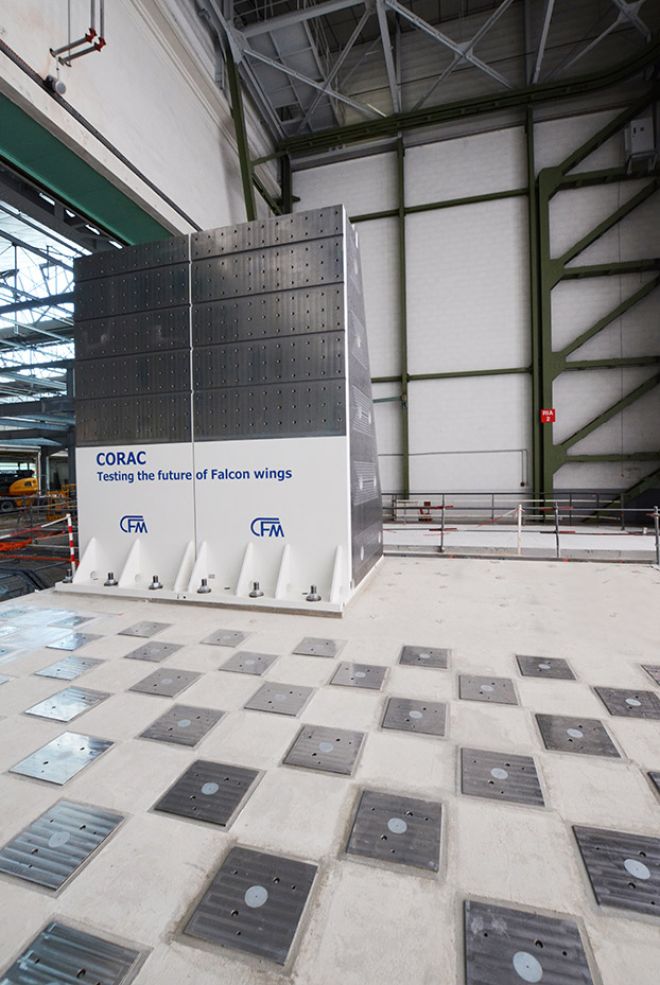
Wing Components Test Rig
Full Scale Test for Wingtip (WT) and Winglet (WL) of the civil Airbus A350 XWB
This test rig from CFM Schiller for the civil aviation industry is designed for testing of wings and their components, in this case for the Airbus A350 XWB. The tests can be carried out both statically and dynamically. These development and certification tests are applied for qualification of parts for the production process. Loadings that act upon the wingtip and winglet structures during service life are simulated with this full scale test rig.
The relevant types of loading are bending, torsion, and a combination of both types. Loading is applied by 15 hydraulic actuators, which adapt the specimen via a special interface at certain predefined locations. Each of the 5 yokes holds 3 actuators. In order to achieve unfalsified measurement results, the weight of the yokes is compensated by the so called counter balance system, using wire ropes, pulleys, and counter weights.
The specimen is mounted on the highly stiff strong wall, which weighs approx. 17 tons. Brackets on the strong wall serve as adapter interfaces. They are customized for every individual specimen.
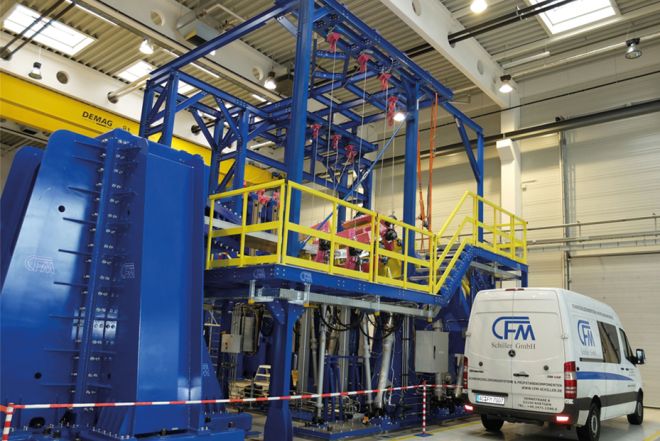
Ground Vibration Test (GVT)
The GVT air spring system units simulate the dynamic behavior of the aircraft under flight conditions, while the plane can remain on the ground. This allows the executions of a modal analysis of the aircraft. The GVT serves to prove and validate FEM calculations of the aircraft structure. Each air spring system unit is carried out as a welded framework, which comprises a hydraulic lifting mechanism, an adapter spindle with integrated load cell, air springs, and a pneumatic level control system.
The hydraulic lifting mechanism operates at the jacking points of the aircraft and lifts it until the landing gear loses contact to the ground. During the ground vibration test, the aircraft rests on the integrated air springs. The system features two possible natural frequencies: 1.6 Hz and 0.9 Hz. The lower natural frequency is achieved by connecting additional volumes to the air spring system. The air spring system units are flexibly movable on caster wheels and can thus be positioned exactly below the aircraft’s jacking points. The hydraulic actuators with the adapter spindles carry the entire load of the aircraft during lifting and testing.
